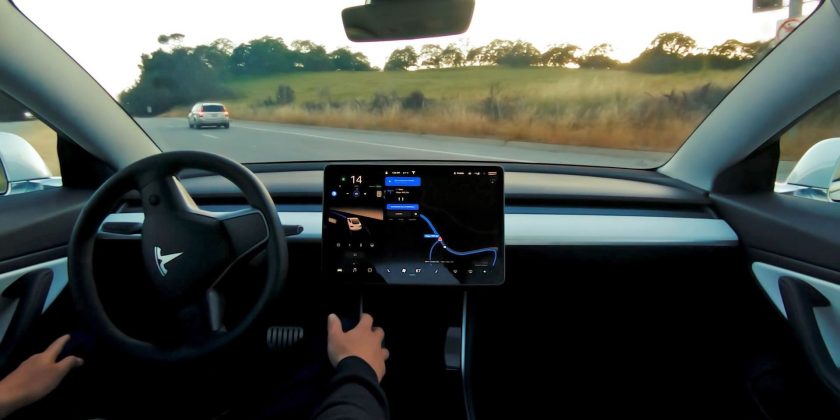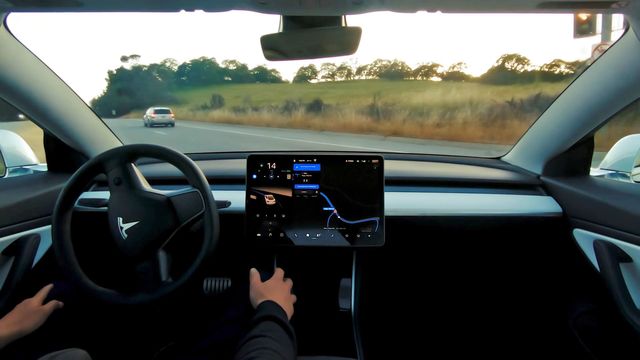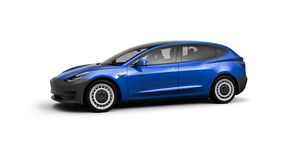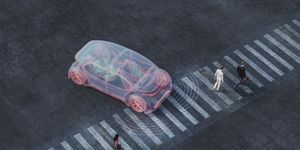Tesla rolled out what it calls “Full Self-Driving” on a subscription basis over the weekend, months after the option to subscribe on a monthly basis was announced as an alternative to the one-time $10,000 payment at purchase. The system, as it now sits, offers advanced features such as Navigate on Autopilot, Auto Lane Change, Autopark, Summon, Traffic Light and Stop Sign Control.
The monthly subscription option had been mentioned by company CEO Elon Musk for an even longer period, but was reported to be imminent only in the past few months, and is generally positioned as an alternative that might appeal to those who are leasing a Tesla for two or three years versus buying a car to keep for a longer period.
However, there are a couple of nuances that are already causing some to sour on the subscription option.
First, monthly pricing for Full Self-Driving depends heavily on whether a given Tesla features the older Enhanced Autopilot package, and whether that package features the latest hardware. If it does, and if that hardware is the latest version, then the monthly FSD subscription is $99 a month. If it does not, then the monthly subscription price is $199 a month.
Second, Tesla models manufactured prior to 2019 will need a hardware 3.0 update to actually use FSD features, with the update (essentially a new computer) costing $1,500.
“Hardware upgrades to the Full Self-Driving computer are not included with Full Self-Driving capability subscriptions,” the automaker says. “To be eligible for FSD capability subscriptions, the FSD computer must be installed in your vehicle. To install the FSD computer, schedule an installation appointment from the Tesla app.”
But the main issue, and one that’s causing some surprise on EV forums is that Tesla has advertised its cars since 2016 as already having all the hardware necessary for all the FSD features to be used in the future without any hardware upgrades. In reality, only cars delivered since the spring, 2019 have the necessary hardware 3.0 package for FSD to be activated on a monthly basis, so older Teslas will need the upgrade to use the FSD features that can be activated via a subscription.
As a result, the population of existing Tesla models that do not yet have the required hardware 3.0 package is not trivial.
Among other things this issue is certainly a reflection of how, in the quest for higher levels of automation, hardware in the form of computer chips and sensors can become quickly obsolete in just a couple of years. Industry observers have noted this to be an issue particularly for Tesla, which has made what it calls Full Self-Driving a big selling point well before the more advanced features of the software, still considered to be SAE Level 2 by Tesla’s own admission to the NHTSA and California regulators, began arriving in the past few months. Industry observers have also noted that Tesla has staked quite a bit on its over-the-air updates, while downplaying the rapid progress being made in hardware, including its own progress.
A related matter is that Tesla has begun publicizing FSD capabilities years before several features have actually been distributed by OTA updates, and now has vehicles dating back five years that will need hardware updates to use some of the latest FSD features.
Perhaps a longer-term issue that Tesla faces is its new reliance on its vehicles’ visual sensors for FSD operation. Higher levels of automation will continue to evolve and arrive on the market in the coming years, as they have in the case of Honda’s Level 3 system that permits eyes-off and hands-off usage, but besides OTA updates and computer hardware updates (the latter being somewhat pricey), Tesla plans to continue to sell FSD with visual sensors only for years to come.
Overall, the rollout of subscription-based FSD should be an important test for the industry, in terms of how much users are willing to pay for some advanced driver-assistance features.
“All Tesla cars require active driver supervision and are not autonomous,” the automaker says of its Full Self-Driving system.
Source: Read Full Article




